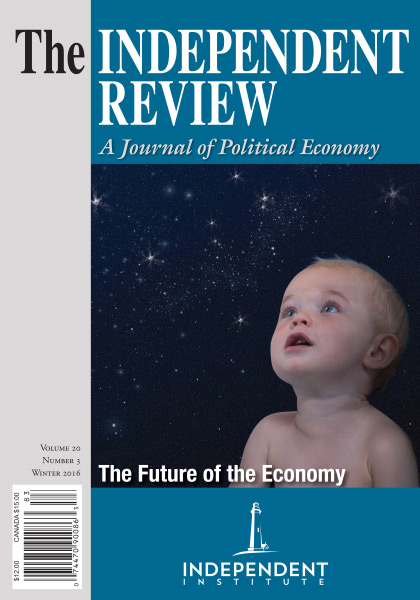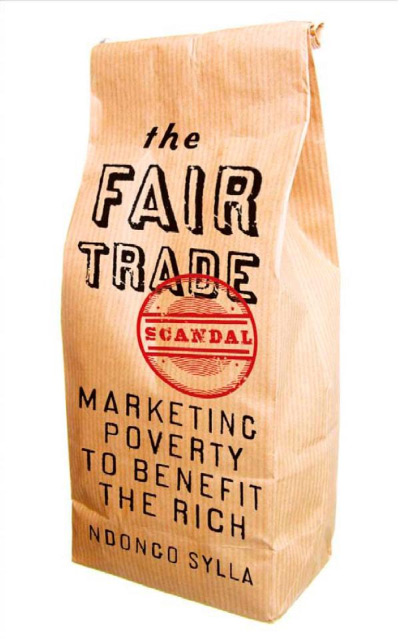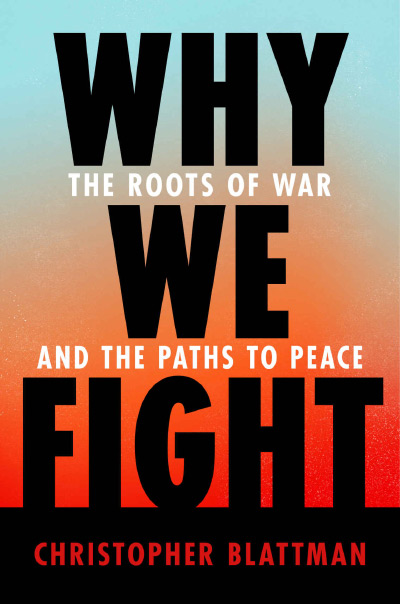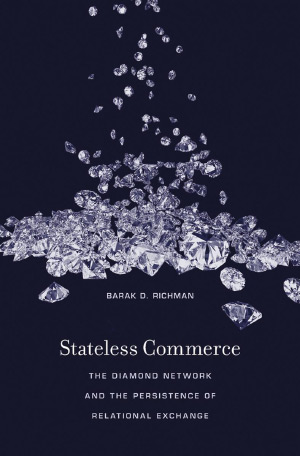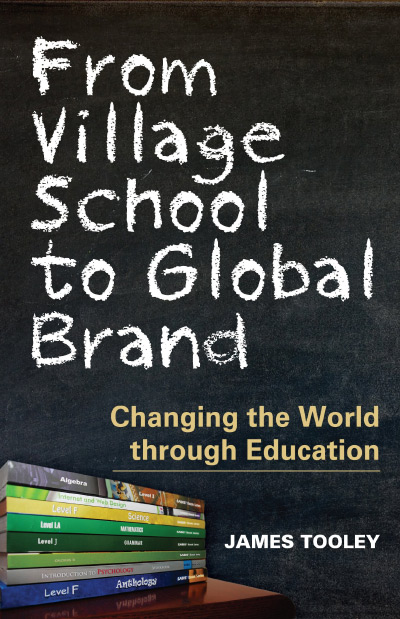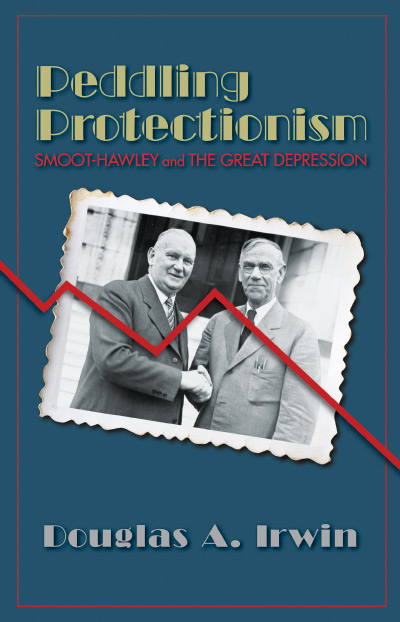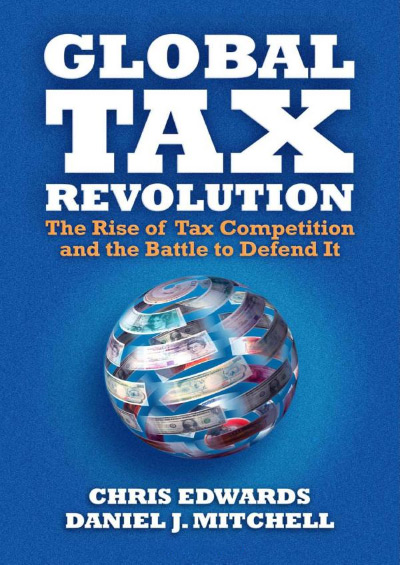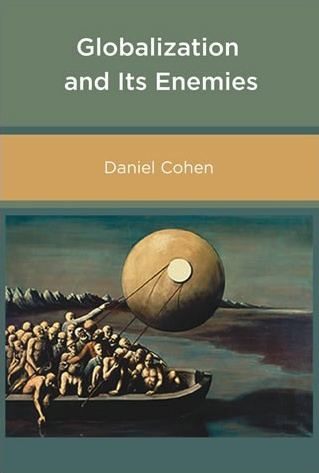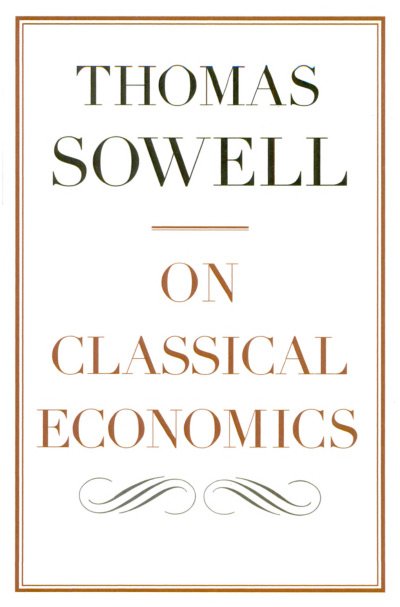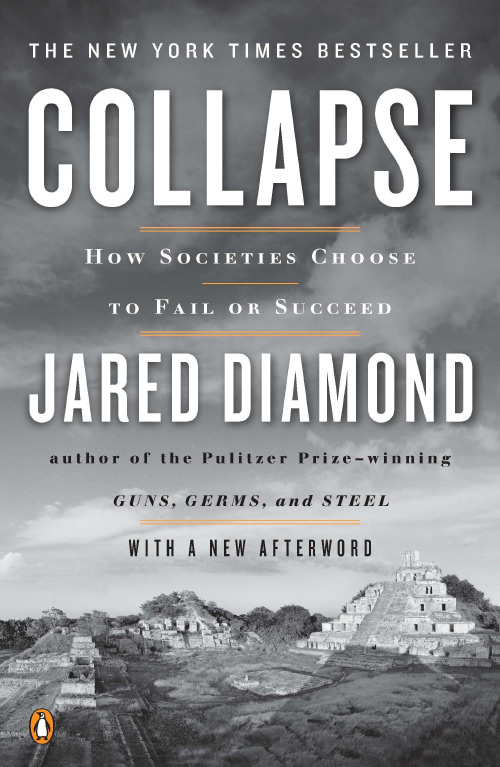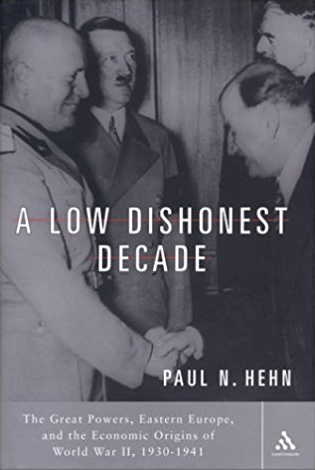The Fair Trade movement is designed to help farmers in less developed countries by raising the price of agricultural goods. As Douglas A. Irwin (Free Trade under Fire [Princeton: Princeton University Press, fourth edition, 2015], p. 237) summarizes it: “Fair Trade Organizations buy coffee, tea, cocoa, cotton, and other developing country exports at above-market prices as a way of giving poor farmers extra income. They certify the goods with the fair trade label and sell them to Western consumers who are willing to pay a higher price to help lift those farmers out of poverty, provide them with a more stable source of income and encourage them to engage in environmentally sustainable cultivation. ... The question is whether it [the Fair Trade movement] is effective in achieving its goals. Studies have shown that Fair Trade-certified producers do receive higher prices for their goods than conventional farmers. However, the gains to these farmers are much lower than they appear once one takes into account the costly administrative process of becoming and staying certified, which requires multiple reports and audits.”
Ndongo Sylla’s The Fair Trade Scandal explores these issues, taking a skeptical view of the movement and indicting capitalism for its failures. Although it highlights important issues, its major flaw is its failure to adequately appreciate how less fettered markets offer win-win solutions to the problem of rural poverty in developing countries.
The single most important number in The Fair Trade Scandal is that (p. 125) “for each dollar paid by American ‘consum’actors’ to purchase an FT [fair trade] product, 3 cents of ‘additional income’ are transferred to the South.” For the most part this estimate refers to coffee. One reason the number is so low is the cost of FT certification, which is paid to certifying agencies in the North. Within each country, the FT exports are produced by the larger cooperatives and producer organizations. This is because the larger units are more productive and enjoy economies of scale, so the certification cost as a fraction of potential FT exports are the lowest for these entities. The same issue occurs for countries and continents. Most FT goods originate in high-productivity, relatively-affluent South America rather than in low-productivity, relatively-impoverished Africa. Both mechanisms mean that demand is skewed from the more impoverished to the less impoverished. Sylla concludes because of the high cost of certification (p. 148) that “FT sales for an amount of $31.7 billion would be necessary, if all things remained equal, to generate an additional $1 billion revenue for the South.” He continues (p. 149) that “it is difficult to identify any sense of consistency to the certification approach of this movement other than the plutocratic rationale, whose effect is to inflate statistics, including its own gains.”
Unfortunately, although Sylla appropriately rails against the policies of developed countries toward goods from developing nations, some of his examples are confusing and there are numerous problems with his interpretations and emphases, which are detailed below.
Sylla notes, for example, that “Japan opens up its borders to 98 percent of products, but excludes rice, sugar, fish and shoes” (p. 27). Does Japan really exclude imported rice, sugar, fish and shoes? No, its imports include Vietnamese tuna, Alaskan salmon, and Indonesian and Philippine sugar. It appears that Sylla is referring only to coverage by Japanese preferential trading arrangements. However, his point that certain preferential arrangements treat African agricultural goods badly is well taken. See, for example, Kimberly Ann Elliott’s work on the U.S. African Growth and Opportunity Act (AGOA) on the Center for Global Development web page at http://www.cgdev.org/expert/kimberly-ann-elliott).
Sylla argues (p. 29) that the protection given to farmers by developed countries is a blatant example of hypocrisy. On the contrary, this is a blatant example of rent seeking by farmers with net costs to the countries that impose them. My favorite footnote comes from Irwin (2015, p. 88). It describes how “President Bill Clinton interrupted a ‘meeting’ with Monica Lewinsky to take a phone call from” a major sugar producer in south Florida who was also a major provider of political campaign contributions at the time.
Later, Sylla argues (p. 31) that liberalization by less developed countries “serves the interests of rich countries more than those of developing countries,” depriving less developed countries (LDCs) of the ability to protect infant industries and collect revenue from tariffs. However, this misses the point that the best infant industry policy is usually competition and a liberalized labor market, which encourages the production of quality products, as workers build their human capital in return for lower wages. Moreover, there is no reason why a LDC can’t impose a value added tax, where that tax is collected at the border and gradually extended to domestic production as the fiscal regime becomes more sophisticated. This is an approach advocated by a tax advisory group to Malawi years ago based at Duke University.
Contrary to Sylla’s logic, the fact that the U.S. grew with high import tariffs does not mean that is a suitable development strategy today, now that information technology makes it possible to use first best taxes on domestic production and consumption. As Grant Gardner and Kent Kimbrough (“Tax Regimes, Tariff Revenues, and Government Spending. Economica 59 (February): 75-92) document, once excise taxes and then the income tax became viable sources of tax revenue, U.S. tariffs declined.
Sylla’s worldview is well defined, but often makes little sense. He writes (p. 62) “What the abolitionists did not understand or refused to accept is that British capitalism simply could not do without slavery.” If that is the case, why didn’t it collapse after slavery was abolished and how does that capitalism flourish today? In fact, much of trade policy everywhere is aimed – through tariffs, quotas, and antidumping regulation – at countering the benefits of cheap products from abroad, and shrinking the benefits that capitalism offers.
His discussion of Adam Smith, David Ricardo and comparative advantage would be enriched by recognizing Adam Smith’s opportunity cost theory. Sylla argues that Ricardo developed the idea of comparative advantage “to justify the benefits of tree trade” (p. 65) and shows how this theory enabled one to see how Britain gained from trading with Portugal. My preference would be to replace “justify” with “explain.” In fact, the theory of comparative advantage shows how both countries can simultaneously gain from trade. Adam Smith is generally known for the theory of absolute advantage, but as Roy Ruffin (“The Development of International Trade Theory” in Bernhofen et al. editors, Palgrave Handbook of International Trade [New York: Palgrave Macmillan, 2011], p. 17) has pointed out, Smith argued that a country gains from trade so long as the quantity of the export it must give up to obtain one more unit of an importable through trade is less than the exportable production it must give up to produce one more unit of the importable. Thus the gain to an individual country from trade occurs when the opportunity cost of home production exceeds the cost of acquisition through trade.
Ruffin’s analysis merits close attention:
It is interesting that Adam Smith himself did not fall into the fallacy of absolute advantage, though many textbooks allege that he is responsible for the theory of absolute advantage. When, on superficial reading, Smith appeared to discuss absolute advantage, he did not lapse into Torrens’s error and coolly made a correct argument that the gains from trade result from devoting fewer home resources exporting other goods to pay for imports:
“By means of glasses, hotbeds, and hot walls, very good grapes can be raised in Scotland, and very good wine too can be made of them at about thirty times the expense for which at least equally good can be brought from foreign countries. Would it be a reasonable law to prohibit the importation of all foreign wines merely to encourage the making of claret and burgundy in Scotland? But if there would be a manifest absurdity in turning towards any employment thirty times more of the capital and industry of the country than would be necessary to purchase from foreign countries an equal quantity of the commodities wanted, there must be an absurdity, though not altogether so glaring, yet exactly of the same kind, in turning towards any such employment a thirtieth, or even a three hundredth part more of either.”
... Notice he [Smith] did not say it took 30 times the labour and capital used to produce grapes than in the foreign country, but that it may take 30 times the expense of acquiring the same from abroad.”
Sylla (p. 66) writes that the argument for free trade is based on the belief in “a lack of rigidity on the supply side: for instance, with trade openness, exporting firms can quickly increase their production and adjust to the evolution of global demand.” In fact, his argument cuts in the other direction: primary production disturbances arising domestically are more frequent and plentiful than disturbances arising internationally, so prices are more likely to be stable in a free trading economy. This is to be expected to the extent that bad harvests are likely to depend on local conditions, and demand disturbances in the large rest of the world are likely to cancel out to some degree. Moreover, in general factor immobility diminishes the gains from trade but does not eliminate them. What can turn the gains from trade into losses is factor price rigidity (perhaps Sylla is getting at this when he refers to unemployment), but the judicious use of macroeconomic policy and exchange rate flexibility turns nominal factor price rigidity into a non-issue. And to the extent that free trade raises the standard of living, there is a presumption that it will increase real wages, rendering real wage inflexibility less of a problem.
Sylla argues that the focus of the fair trade movement on raw materials has damaged LDCs (p. 149). “Fairtrade is pulling developing countries back. Besides it does not allow them to envisage local industrial processing, which creates more value added and is more profitable in the long term.” However, there is no reason why fair trade need be restricted only to the export of non-processed agricultural goods.
Sylla makes a plea for expanding the manufacturing sector in LDCs (p.150). “Recent history has shown that developing countries that managed to lift their economies largely focused on the export of manufacturing products and diversification” (p. 151). “Refocusing agriculture around domestic concerns is, in my view, more profitable for LDCs in the long term than an economic growth model based on agricultural exports.” Unfortunately, this focus on manufacturing versus agriculture is misplaced. Instead, attention should be turned to broad based economic policy. Secure property rights, low taxes, business friendly regulation, good port facilities, a transparent legal system, and efficient communications should cause the appropriate mix of exports and the appropriate mix for the domestic market. Should Quebec stop exporting maple syrup? Should New Zealand stop exporting kiwi fruit? This argument is more fully developed by Alecia Cassidy, Edward Tower, and XiaoluWang (“Manufacturing Fetishism: The Neo-Mercantilist Preoccupation with Protecting Manufacturing,” in Amitrajeet, Batabyl and Nijkamp, editors, The Region and Trade: New Analytical Directions [Singapore: World Scientific, 2015], p. 152). Sylla graces the concluding paragraph of his book (p.152) by recognizing the importance of some of these issues, but not all of them: “to fully benefit from the gains of economic openness, the poorest countries will have to consider the well-known behind-the-border policies, which consist in improving the quality of infrastructures, and rationalizing administrative and customs procedures.”
Sylla explains (pp. 49-50) that FT certification requires meeting multiple standards: 1) payment of a minimum guaranteed price to producers; 2) management of the development premium by cooperatives or associations; 3) provision of pre-financing facilities to producers who request them; 4) contracts that facilitate long-term planning as well as ‘sustainable production’; and 5) the guarantee of FT product traceability. “Fair trade seeks to promote economic, social, and environmental development in the South by offering better prices to small producers.” The standards for small producers (p. 51) are that they must “promote democracy, participation and good governance among themselves; discrimination is prohibited”; “the FT premium must be managed in a transparent and collegial manner; it must be invested in promising sectors and must not be used for personal needs”; no GMOs; no child labor or forced labor.
The essential idea of fair trade is to expand demand for certified goods. Some of this is likely to be demand shifted away from non-FT products. I am concerned that the cost of certification shrinks the revenue going to producers, and the increased spending on FT certified products means less spending on non-FT certified products, and, following Sylla’s observation, the producers of these non-FT certified products are generally the poorest and smallest and least organized producers who inhabit the poorest countries, typically those in Africa.
Much of the intention of the fair trade movement is to improve the lives of producers. Assessments of whether these lives are improved vary. Irwin (p. 238) quotes a study of farmers in Uganda by Christopher Cremer, Deborah Johnston, Carlos Oya, and John Sender (Fair Trade, Employment, and Poverty Reduction in Ethiopia and Uganda [London: School of Oriental and African Studies], 2014), who find that “... in some cases, indeed, the data suggest that those employed in areas where there are Fairtrade producer organizations are significantly worse paid and treated than those employed for wages in the production of the same commodities in areas without any Fairtrade certified institutions (including in areas characterized by smallholder production).” Other studies offer mixed reviews. For example Mark Moberg and Sarah Lyon (Fair Trade and Social Justice: Global Ethnographies [New York: New York University Press], 2010, back cover) conclude “Fair Trade often delivers material improvements for producers that are much more modest than the profound social transformations the movement claims to support.”
The Fair Trade Scandal publicizes the scandalous aspects of the fair trade movement, in particular the high cost of fair trade certification and the fact that only larger more productive firms in more productive countries can afford the certification. Sylla’s plea for expanding fair trade to processed agricultural products to eliminate the bias against processing in LDCs is worthwhile. The author takes a rather pro-interventionist rather than a just-get-out-of-the-way view or a market facilitation view of economic development policy. He pays only a little bit of lip service to improving behind-the-border policies. My preference would be more discussion of initiatives to improve governance, regulation, the legal structure, and the functioning of all markets in developing countries. My hope is that this book spurs more research into how to streamline fair trade policies to help those who are the most impoverished. I also hope it promotes the idea that the fair trade movement is limited in what it can do. For a whopping gain to the most impoverished LDC farmers, we should look to developed countries to cut their protection of their own agriculture and to LDCs to cut their typically highly distorting import restrictions on manufacturing and to cut their export taxes on agriculture.
EDWARD TOWER Duke University and Chulalongkorn University
| Other Independent Review articles by Edward Tower | |
| Summer 2019 | Enron Ascending: The Forgotten Years 1984-1996 |

